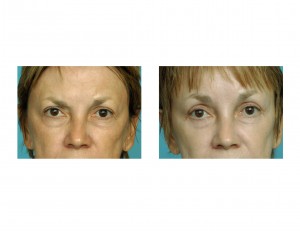As one ages, changes take place in the face from top to bottom. While changes in the neck and jowl are most commonly observed, the middle part of the face is also affected. Sagging cheeks and deepening nasolabial folds are the hallmarks of midfacial aging. Different approaches are taken to address these issues including cheek implants and injectable materials for filling out the nasolabial folds. For the right patient, however, a mid-face lift may be more effective and the results can last much longer.
A midface lift approaches the cheek through a combination of incisional approaches, including the lower eyelid and scalp and occasionally through the mouth as well. All are designed to free up the cheek tissues and move it back up on the bone. The key to understanding the procedure, and how well it works, is how it is secured in its new position. There have been numerous methods of cheek suspension and there is no universally agreed on approach. In my Indianapolis plastic surgery practice, I prefer a superior or scalp point of fixation in which sutures from the cheek are attached to the skull above the forehead. This provides tremendous tissue support and places no tensi
on on the tissues around the eye. It is easy to pass sutures underneath the forehead tissues which gives a perfectly vertical line of suspension. The sutures are attached to the bone either through a bone tunnel or a resorbable screw. Getting the right amount of lift without overdoing it is key to avoid a very visible unnatural look around the eyes.Â
Many tout that a mid-face lift has a faster recovery with less trauma than a full face lift. I would disagree. The swelling around the eyes is much more noticeable and bothersome than any neck swelling. The swelling around the eyes does not fully go away for several weeks. This is an important consideration when one is considering this procedure.
Often mid-face lifts are done in conjunction with blepharoplasty and necklift procedures as aging of the face rarely occurs in just one specific area. A common combination is as part of periorbital rejuvenation with blepharoplasties and a browlift, effecting treating the upper two-thirds of the face.
One of the difficult decisions in strategies to manage aging of the middle-third of the face is whether to do a mid-face lift or use a cheek/submalar implant with other surrounding procedures. There is no right answer that suits everyone. Mid-face lifts can make a real difference in the cheek and eye area that helps rejuvenate an often neglected part of the face.
Dr. Barry Eppley
Indianapolis, Indiana



